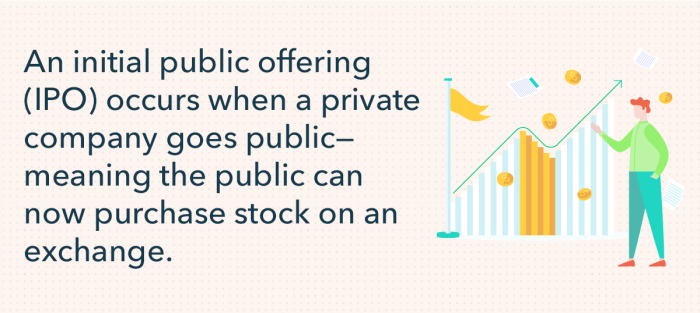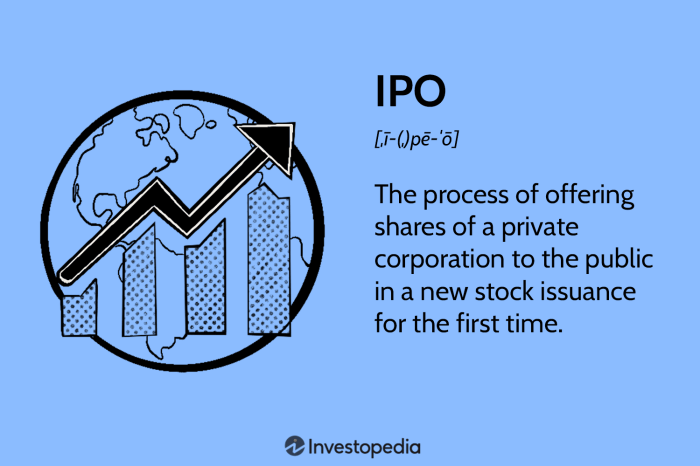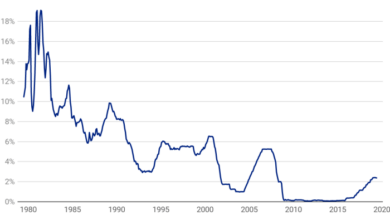
Instacart Stock Faces Volatility Post IPO
Instacart Stock Faces Volatility Post IPO, a tale of a company navigating the turbulent waters of the public market. The grocery delivery giant’s initial public offering (IPO) was met with mixed reactions, sending its stock on a roller coaster ride in the days and weeks following its debut.
Market conditions, investor sentiment, and the company’s own performance all played a role in this volatility.
Instacart’s IPO price was set at $30 per share, but the stock quickly fell below this level, reflecting concerns about the company’s profitability and the competitive landscape in the grocery delivery sector. The company’s business model, which relies heavily on partnerships with grocery stores and a large network of independent shoppers, has been questioned by some analysts, who worry about the company’s ability to maintain its margins and scale its operations effectively.
Instacart’s IPO Performance

Instacart’s initial public offering (IPO) was a highly anticipated event in the tech world. The company, known for its grocery delivery service, had grown rapidly during the pandemic, attracting a large user base. However, the IPO’s performance was not as smooth as many had hoped.Instacart priced its IPO at $30 per share, raising $760 million.
This was at the lower end of the expected range, which was $30 to $33 per share. The stock opened at $28.50 per share on its first day of trading, and then proceeded to decline further in the days and weeks that followed.
Stock Performance Following the IPO
Instacart’s stock performance in the days and weeks following the IPO was characterized by significant volatility. The stock initially opened below its IPO price, and then continued to decline in the following days and weeks. There were a few rallies, but the overall trend was downward.
By the end of its first month of trading, Instacart’s stock had fallen by more than 20% from its IPO price.
Reasons for Instacart’s Stock Volatility
There are several factors that contributed to Instacart’s stock volatility after its IPO. One of the main reasons was the overall market conditions. The stock market was already experiencing a period of volatility, and this was exacerbated by concerns about rising inflation and interest rates.
Another factor was investor sentiment. Many investors were cautious about investing in Instacart, given its high valuation and its uncertain path to profitability. The company had been profitable in the past, but it had also been heavily reliant on promotions and discounts to attract customers.
Some investors questioned whether Instacart would be able to sustain its growth without relying on these tactics.In addition to these factors, Instacart’s stock volatility was also influenced by the company’s own performance. The company reported a decline in its quarterly revenue in the first quarter of 2023, which further dampened investor sentiment.
This decline was attributed to a slowdown in the growth of the grocery delivery market, as well as increased competition from other players such as Amazon and Walmart.
Instacart’s stock has been on a rollercoaster ride since its IPO, mirroring the volatile nature of the grocery delivery market. While Instacart navigates these turbulent waters, a fascinating parallel can be drawn to the digital relaunch of Bed Bath & Beyond, now under the guidance of Overstock.com, as outlined in this insightful article overstock transforms bed bath beyonds revival with digital relaunch.
This revival story demonstrates the power of a digital-first approach, a strategy that could offer valuable lessons for Instacart as it seeks to solidify its position in the evolving grocery landscape.
Factors Influencing Instacart’s Stock Price
Instacart’s stock price is subject to various factors, some internal and others external, that can significantly impact its future performance. Understanding these factors is crucial for investors to make informed decisions.
Competition from Other Grocery Delivery Services
The grocery delivery market is fiercely competitive, with players like Amazon Fresh, Walmart Grocery, and DoorDash all vying for market share. Instacart faces intense pressure to maintain its competitive edge and attract and retain customers.
Instacart’s stock has been experiencing a rollercoaster ride since its IPO, reflecting the uncertainties of the grocery delivery market. To make informed investment decisions, it’s crucial to understand the role of credit rating agencies like Fitch, Moody’s, and S&P, which assess the creditworthiness of companies.
Learn all about credit rating agencies a closer look at Fitch, Moody’s, and S&P for smart investments. By analyzing these ratings, investors can gain insights into a company’s financial health and potential risks, which can be especially important when considering volatile stocks like Instacart.
- Pricing Strategies:Instacart needs to remain competitive on pricing, which can be challenging with rising inflation and operating costs. Offering discounts, promotions, and loyalty programs can help attract customers, but they can also impact profitability.
- Service Quality and Delivery Speed:Customers expect fast and reliable delivery, and Instacart must ensure its service meets these expectations. Factors like order accuracy, timely delivery, and responsive customer support play a significant role in customer satisfaction.
- Partnership Strategies:Expanding partnerships with grocery stores and retailers is essential for Instacart to access a wider range of products and locations. These partnerships can also provide access to new customer segments.
Economic Factors, Instacart stock faces volatility post ipo
Economic factors, particularly inflation and consumer spending, have a direct impact on Instacart’s business.
- Inflation:Rising inflation leads to increased costs for groceries and delivery services. Instacart needs to balance price increases with maintaining affordability for its customers.
- Consumer Spending:Consumer spending patterns can significantly impact Instacart’s revenue. During economic downturns, consumers may cut back on non-essential spending, including grocery delivery services.
Technological Advancements
Technological advancements play a crucial role in shaping the grocery delivery landscape.
- Automation:Instacart can leverage automation technologies, such as robotic picking and delivery, to improve efficiency and reduce costs. This can enhance its competitiveness and profitability.
- Data Analytics:Utilizing data analytics to understand customer preferences and optimize operations is essential. Instacart can use data to personalize recommendations, improve delivery routes, and enhance customer experience.
- Emerging Technologies:Instacart needs to stay ahead of the curve by exploring emerging technologies like drone delivery and autonomous vehicles. These technologies can offer new opportunities for growth and differentiation.
Instacart’s Business Model and Growth Strategy: Instacart Stock Faces Volatility Post Ipo

Instacart, the grocery delivery and pickup platform, has carved a niche for itself in the rapidly evolving e-commerce landscape. Its unique business model and strategic growth initiatives have propelled it to become a major player in the grocery delivery market.
This section delves into the intricacies of Instacart’s operations, exploring its core business model, revenue streams, and growth strategy.
Instacart’s stock has been a rollercoaster since its IPO, with investors grappling with the company’s growth trajectory and the competitive grocery delivery landscape. Meanwhile, Wall Street is gearing up for a potentially positive start to the week, with the Jackson Hole symposium and Nvidia’s earnings report taking center stage.
How these events unfold could impact investor sentiment towards Instacart, as the company navigates its path to profitability.
Instacart’s Core Business Model and Revenue Streams
Instacart’s business model revolves around connecting customers with personal shoppers who purchase groceries from partner retailers and deliver them to their doorsteps. The company generates revenue through a combination of:
- Delivery Fees:Instacart charges customers a delivery fee for each order, which varies based on the distance, order size, and delivery speed.
- Service Fees:Instacart charges a service fee for each order, which covers the cost of its platform, technology, and shopper network.
- Subscription Fees:Instacart offers a subscription service called Instacart Express, which provides customers with unlimited free deliveries for a monthly fee.
- Advertising Revenue:Instacart generates revenue from advertising by partnering with brands and retailers to promote their products on the platform.
Instacart’s Growth Strategy
Instacart’s growth strategy is multifaceted, encompassing expansion plans, new product offerings, and strategic partnerships:
- Geographic Expansion:Instacart continues to expand its geographic reach, adding new cities and regions to its service area. This strategy aims to tap into new customer bases and increase market share.
- New Product Offerings:Instacart has introduced new product offerings, such as Instacart Express, which provides customers with unlimited free deliveries for a monthly fee. This strategy aims to attract new customers and increase customer loyalty.
- Strategic Partnerships:Instacart has formed strategic partnerships with major retailers, such as Kroger, Costco, and Albertsons. These partnerships provide access to a wider range of products and customers.
- Technology Investments:Instacart invests heavily in technology to improve its platform, optimize its operations, and enhance the customer experience.
Comparison to Competitors
Instacart faces competition from several players in the grocery delivery market, including:
- Amazon Fresh:Amazon’s grocery delivery service, Amazon Fresh, is a major competitor to Instacart. Amazon Fresh offers a wide selection of products and a strong delivery network.
- Walmart Grocery:Walmart’s grocery delivery service, Walmart Grocery, is another significant competitor. Walmart Grocery leverages its extensive retail network and low prices to attract customers.
- DoorDash:DoorDash, a food delivery platform, has expanded into the grocery delivery market. DoorDash offers a wide range of grocery options and a convenient user interface.
- Uber Eats:Uber Eats, another food delivery platform, has also entered the grocery delivery market. Uber Eats offers a similar service to DoorDash, with a focus on speed and convenience.
Instacart differentiates itself from its competitors by focusing on a curated selection of products, personalized shopping experiences, and a strong emphasis on customer service. The company’s vast network of shoppers, coupled with its technology-driven platform, enables it to offer a seamless and efficient grocery delivery experience.
Investor Sentiment and Market Expectations
Investor sentiment surrounding Instacart is currently mixed, with some investors remaining optimistic about its long-term growth potential, while others are cautious due to its recent stock performance and the competitive landscape in the grocery delivery market. The company’s ability to navigate these challenges and deliver on its growth promises will be crucial in shaping investor sentiment and driving future stock performance.
Key Metrics Investors Are Watching
Investors are closely monitoring several key metrics to gauge Instacart’s performance and future prospects. These metrics provide insights into the company’s revenue growth, profitability, market share, and customer engagement.
- Revenue Growth: Investors are looking for sustained revenue growth, indicating strong demand for Instacart’s services and successful expansion into new markets.
- Gross Merchandise Value (GMV): GMV represents the total value of goods sold through Instacart’s platform. Consistent growth in GMV indicates a healthy ecosystem and strong customer engagement.
- Customer Acquisition Cost (CAC): Investors are monitoring CAC to assess the cost of acquiring new customers and ensure it remains manageable.
- Customer Retention: A high customer retention rate demonstrates the value and loyalty of Instacart’s customer base.
- Profitability: Investors are seeking evidence of Instacart’s path to profitability, as achieving profitability is crucial for long-term sustainability.
Market Expectations for Instacart’s Future Growth and Profitability
The market expects Instacart to continue growing its market share in the online grocery delivery space, leveraging its established network of partnerships with retailers and its focus on providing a convenient and reliable service. However, achieving profitability remains a key challenge for Instacart and other players in the industry.
“The online grocery delivery market is expected to grow significantly in the coming years, driven by factors such as increasing consumer adoption of online shopping and the convenience of home delivery.”
Investors are looking for Instacart to demonstrate its ability to manage costs effectively, optimize its operations, and potentially explore new revenue streams beyond its core grocery delivery business. For example, Instacart has expanded into areas like advertising and offering its technology to other businesses, which could contribute to its long-term profitability.
Risks and Challenges Facing Instacart

Instacart, despite its impressive growth and market share, faces a number of significant risks and challenges in the competitive grocery delivery landscape. These challenges stem from factors such as intense competition, evolving regulatory environments, and the need for continuous innovation to maintain customer satisfaction.
Competition from Established Players
The grocery delivery market is highly competitive, with major players like Amazon, Walmart, and Kroger aggressively expanding their delivery services. These established players possess significant resources, brand recognition, and established customer bases, posing a formidable challenge to Instacart.
Instacart must constantly innovate and differentiate its services to remain competitive.
- Amazon Fresh: Amazon’s grocery delivery service, powered by its extensive logistics network and Prime membership base, provides a significant competitive threat. Amazon’s ability to offer competitive pricing, fast delivery times, and a wide selection of products puts pressure on Instacart.
- Walmart Grocery Delivery: Walmart, with its vast physical store network and strong customer loyalty, is aggressively expanding its online grocery delivery service. Walmart’s competitive pricing and convenient pickup options pose a direct challenge to Instacart.
- Kroger Delivery: Kroger, the largest supermarket chain in the United States, has also entered the grocery delivery market with its own service. Kroger’s strong regional presence and established customer relationships give it an advantage in certain markets.
Regulatory Changes and Labor Issues
The grocery delivery industry is subject to evolving regulations regarding worker classification, labor rights, and data privacy. These regulations can impact Instacart’s business model and operating costs.
- Worker Classification: Instacart’s classification of its shoppers as independent contractors has been the subject of legal challenges. If courts rule that shoppers should be classified as employees, Instacart would face increased labor costs, including minimum wage, overtime pay, and benefits.
- Data Privacy: Regulations like the General Data Protection Regulation (GDPR) in Europe and the California Consumer Privacy Act (CCPA) in the United States impose strict requirements on how companies collect, store, and use personal data. Instacart needs to ensure compliance with these regulations to avoid fines and reputational damage.






